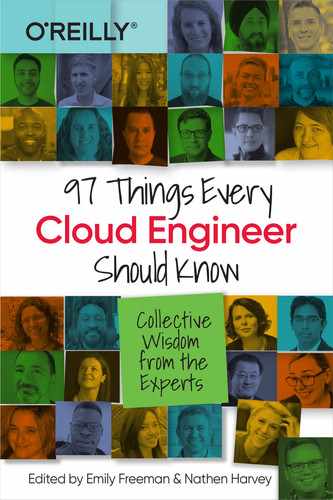Chapter 12. You Can Cloudify Your Monolith
Jake Echanove

Application rationalization exercises often determine that monolithic workloads are better left on premises, insinuating that cloud benefits can’t be realized. But monoliths don’t have to be migrated to cloud native or microservices architectures to take advantage of cloud capabilities. Many methods can be employed to help legacy applications, such as SAP and Oracle apps, realize the agility, scalability, and metered billing advantages of the cloud.
First, it is important to have a deep understanding of the application architecture to ensure that the future landscape is flexible enough to be scalable. For instance, many applications employ architectures consisting of web servers, application servers, and databases. Sometimes these tiers are combined in single-instance deployments, which is a disadvantage in the cloud. If the tiers are combined on a non-86 platform, they should be separated when migrating to an x86-based cloud platform. This will help ensure that the web, app, and database tiers are loosely coupled and can grow and shrink without affecting the other tiers.
Second, it is key to be able identify and understand workload tendencies. Let’s take an enterprise resource planning (ERP) financial system as an example. The month-end close is a busy time for the system, because many users are running reports, running close scenarios, and performing other activities occurring only at the month’s end. Other times of the month are less busy, thus requiring less resources. In the cloud, administrators can bring up extra application servers at month’s end and shut them down for the rest of the month to save on costs or reallocate resources for other purposes. Having knowledge of workload characteristics is key to help admins understand when to scale to meet requirements and when to shut down systems to save on costs.
Third, it is imperative to know that automation isn’t just for cloud native applications. Scaling monolithic applications without user intervention is possible if the cloud admin understands the inner workings of the application. It is common knowledge that autoscaling is often used with cloud native technologies. For example, cloud native apps may be monitored for metrics such as high CPU utilization and then can trigger an event to deploy a new container to spread the workload. Legacy applications often require a different approach, because they don’t function with containers or leverage microservices. The work processes within the application would need to be monitored. This is not merely monitoring an OS process, but interfacing at the application layer to determine whether the application is taxed. If so, the next step would be to trigger an event to spawn additional application servers. It is also possible to recognize a workload decrease to then safely shut down application servers without losing transactions.
Last, advanced methods can create DevOps-like deployment models, use AIOps methodologies for day 2 support, and extend the legacy core functionality using a microservices architecture. Many customers have deployed these methods into their production landscapes to make their legacy apps more cloud native–like, but deploying some of these operating models requires a shift in mindset and a deep understanding of the applications being moved to the cloud. The possibilities are extensive for those cloud admins who also possess application expertise with legacy workloads or that work closely with application owners.
